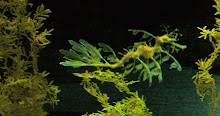Today's first link does exactly what it says on the tin- it is a gallery of photographs of some harvest mice released from captivity and followed in the wild for a year-
http://www.guardian.co.uk/science/gallery/2010/sep/22/animalbehaviour-animals?%2F%3Fpicture=366939504&index=0&ref=nf#/?picture=366939504&index=0
Today's second link is also a photo gallery- this time from The Sun newspaper. The paper gives pride of place to a stunning image of a hummingbird and a green pit viper by Hungarian photographer Bence Mate but also includes some other stunning pictures. There is a scene of masses of frog spawn at the bottom of a mountain pond and one of a hermit crab taking shelter in a bottle-top, in lieu of a shell-
http://www.thesun.co.uk/sol/homepage/news/3150962/OK-you-humm-it-and-Ill-sssing-it.html
On the subject of waste bottles, one article I have been meaning to link to for some time is this piece by Ed Cumming of The Daily Telegraph on "The Great Pacific Garbage Patch". The article, was originally published as "Bottling up a Problem for the Future" on 16th March of this year in the paper version of the newspaper. It looks at the enormous problems posed by (mostly) plastic bottles in the ocean.
This quote gives an idea of the sheer scale of the problem-
"In 2006, the United Nations Environment Programme estimated that there were 46,000 pieces of floating plastic in every square mile of ocean. With its stubborn refusal to biodegrade, all plastic not buried in landfills – roughly half of it – sweeps into streams and sewers and then out into rivers and, finally, the ocean. "
to put this in a biological context, as Mr Cummings's article explains, "there [is] eight times as much plastic as plankton in the North Pacific". The problem is that this material ultimately gets broken down into "nurdles": a really great word, if ever I saw one. Unfortunately, nurdles- tiny grains of plastic- are not a great thing, not in the ocean, at any rate, since they are not only harmful on their own, but they are very absorbent, and "soak up waterborne toxins, such as pesticides and cooling agents". The poison-saturated nurdles are ultimately eaten by filter-feeders at the very bottom of the food chain, and then make their way up it. As any good biologist knows, toxins become increasingly concentrated up the food chain. Aside from the environmental damage this situation will cause, since humans, are at the top of their food chain, this is all bad news.
You can find Ed Cumming's full article online under the title "The Biggest Dump in the World"- [HERE]
Sunday, 26 September 2010
Links of the day-The great pacific Garbage patch, Harvest mice photo gallery
Subscribe to:
Post Comments (Atom)









No comments:
Post a Comment